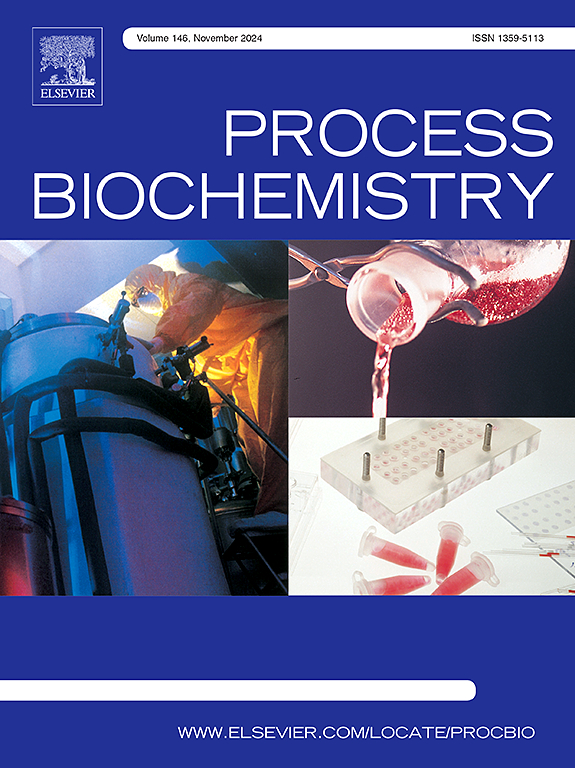Correlations between characteristic flavor substances and microbial diversity in Guizhou Douchiba
IF 4
3区 生物学
Q2 BIOCHEMISTRY & MOLECULAR BIOLOGY
引用次数: 0
Abstract
Douchiba, a unique fermented food of Douchi in Guizhou, China, is well known for its rich and long-lasting flavor and dark-oily appearance. However, flavor substances and microbial community of Douchiba and the correlations between them are poorly understood. In this study, the differences in taste components, volatile flavor substances, and microbial diversity of Douchiba from seven regions and corresponding correlations were explored. Taste components in Douchiba were mainly sweet and bitter amino acids, succinic acid, and lactic acid. A total of 71 volatile compounds were identified and the main volatile flavor contributors were mainly classified into acids, pyrazines, and esters. Notably, 29 characteristic compounds were screened via OPLS-DA and VIP analysis, including tetramethylpyrazine, tartaric acid, isovaleric acid, and glutamic acid. The bacterial communities (mainly Bacillus) dominated over fungi. Tetragenococcus and Aspergillus were the core genera. The correlation analysis confirmed that Bacillus exhibited the significant correlations with pyrazines mainly generated via biotransformation and Maillard reaction pathways, whereas Aspergillus synergistically enhanced acidic compounds through carbohydrate metabolism. These findings provide novel insights into the microbial-driven flavor formation mechanism and a theoretical basis for screening industrial starter cultures and flavor regulation in Douchiba.
贵州豆赤叶特有风味物质与微生物多样性的相关性研究
豆豉叶是中国贵州豆豉的一种独特的发酵食品,以其浓郁持久的风味和深油的外观而闻名。然而,对豆瓣的风味物质与微生物群落的关系以及它们之间的相关性了解甚少。本研究探讨了7个地区豆瓣菜的风味成分、挥发性风味物质和微生物多样性的差异及其相关性。豆赤叶的风味成分主要为甜、苦氨基酸、琥珀酸和乳酸。共鉴定出71种挥发性化合物,主要挥发性风味物质主要为酸类、吡嗪类和酯类。值得注意的是,通过OPLS-DA和VIP分析筛选出29个特征化合物,包括四甲基吡嗪、酒石酸、异戊酸和谷氨酸。细菌群落(主要是芽孢杆菌)比真菌占优势。四粒球菌和曲霉属为核心属。相关性分析证实,芽孢杆菌与吡嗪具有显著的相关性,吡嗪主要通过生物转化和美拉德反应途径生成,而曲霉则通过碳水化合物代谢途径协同增强酸性化合物。这些发现为微生物驱动的风味形成机制提供了新的见解,并为豆瓣的工业发酵剂筛选和风味调节提供了理论基础。
本文章由计算机程序翻译,如有差异,请以英文原文为准。
求助全文
约1分钟内获得全文
求助全文
来源期刊

Process Biochemistry
生物-工程:化工
CiteScore
8.30
自引率
4.50%
发文量
374
审稿时长
53 days
期刊介绍:
Process Biochemistry is an application-orientated research journal devoted to reporting advances with originality and novelty, in the science and technology of the processes involving bioactive molecules and living organisms. These processes concern the production of useful metabolites or materials, or the removal of toxic compounds using tools and methods of current biology and engineering. Its main areas of interest include novel bioprocesses and enabling technologies (such as nanobiotechnology, tissue engineering, directed evolution, metabolic engineering, systems biology, and synthetic biology) applicable in food (nutraceutical), healthcare (medical, pharmaceutical, cosmetic), energy (biofuels), environmental, and biorefinery industries and their underlying biological and engineering principles.
 求助内容:
求助内容: 应助结果提醒方式:
应助结果提醒方式:


